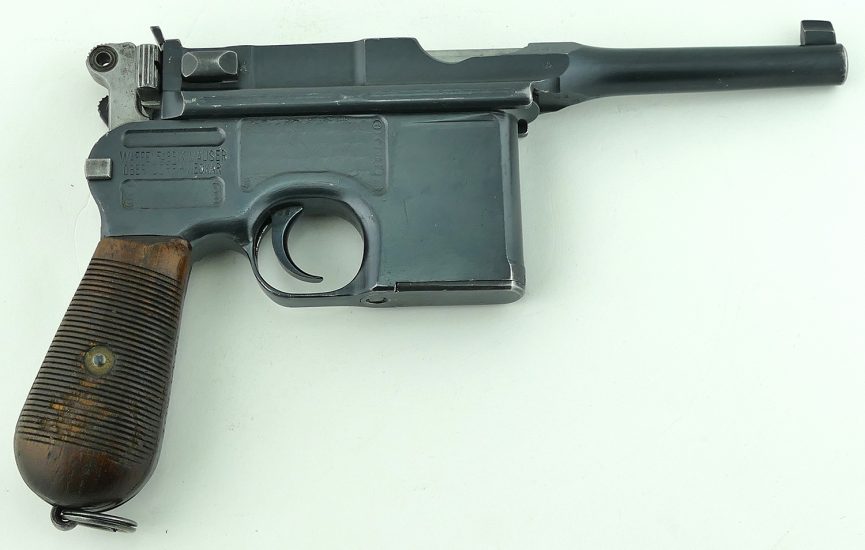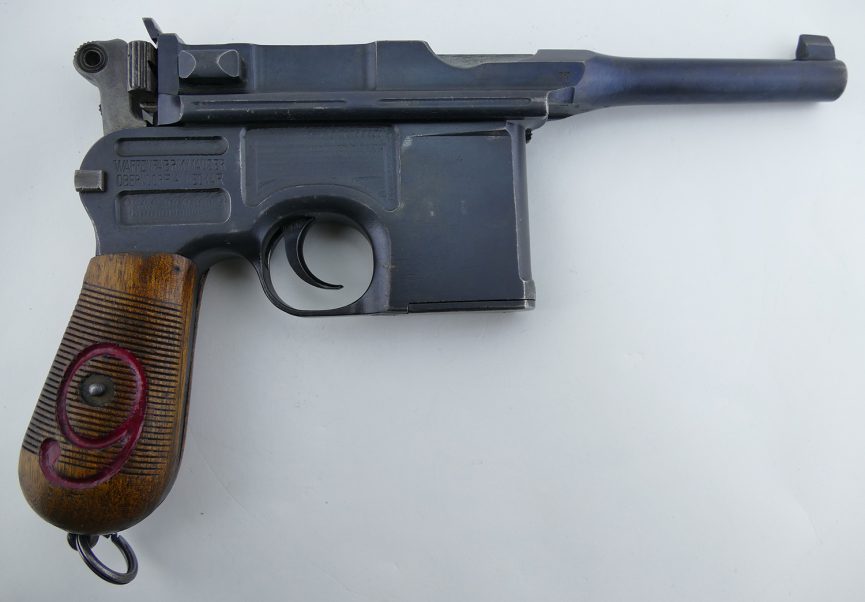Identifying Obscure Markings on Mauser C/96 Broomhandle Pistols, Part 2 In a previous post, we examined a Red 9 1920 rework C/96. In this post, we will examine and attempt to decipher the markings on another Red 9 rework, albeit with a much more convoluted trail. This pistol started life as part of the 150,000 gun contract of 9mm C/96’s known as “Red Nines” in WWI. It has the standard Mauser chamber and left side markings, and is standard in all basic respects. In the immediate post WWI era, as part of the Treaty of Versailles, many military C/96 pistols had their barrels cut to 4″ to comply with the terms of the Treaty. This gun had its barrel cut, the rear tangent sight removed and replaced with a brazed-on notch sight, and at some point the Red 9 grips were replaced with a set of unmarked standard wood grips. … Read More
Mauser C/96 Red Nine 1920 Reworked Pistol
Identifying Obscure Markings on Mauser C/96 Broomhandle Pistols, Part 1 One of the most fascinating aspects of dealing and collecting in antique firearms like we do daily here at Pony Express Firearms is tracing the history of a particular gun. It’s one thing to be able to generally identify the make and model of a pistol, it’s another to know exactly where it saw service, what units it served with, and sometimes to even trace a gun’s whole service history. That’s why being able to identify obscure unit and arsenal markings is a worthwhile endeavor. In the next two posts we’ll be examining two Mauser C/96 pistols, both of which vividly illustrate how markings trace a gun’s history and affect value. This first gun started out life as a standard C/96 pistol, made in a contract of 150,000 guns for the Imperial German Military in WWI. These guns were numbered in … Read More


